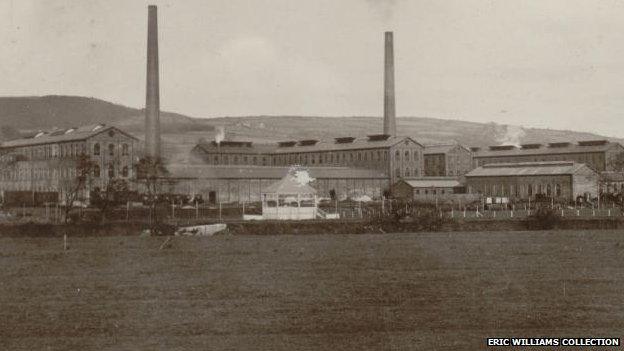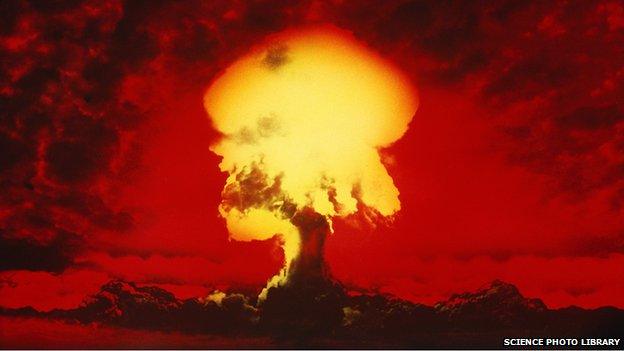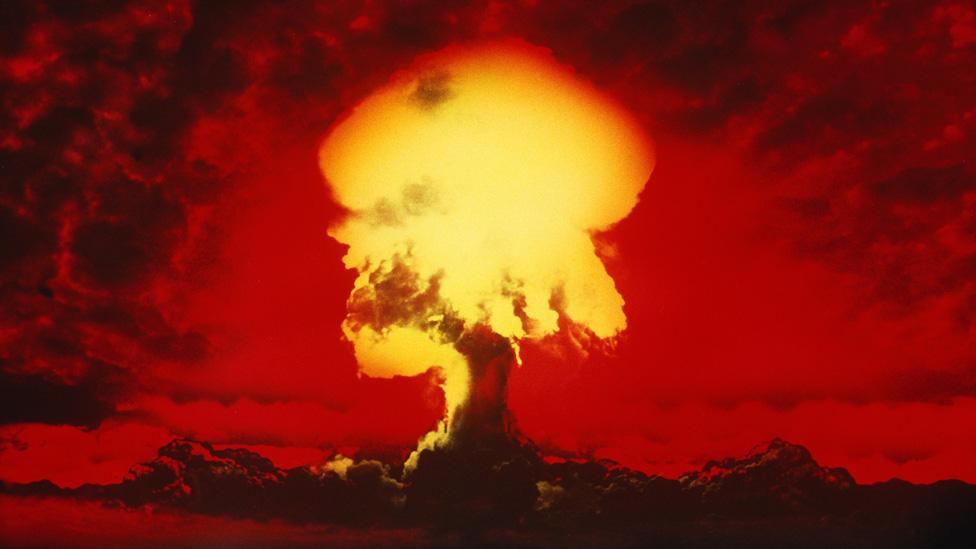Swansea factory's role in Hiroshima atom bomb invention
- Published

The Mond nickel works brought relative prosperity to a previously deprived area
Seventy years ago about 80,000 people died as Hiroshima burned in the wake of the most devastating explosion seen by mankind.
Thousands of miles away in Clydach near Swansea, workers reported to the Mond nickel works oblivious to their role in making the atom bomb possible.
Founded in 1902, the plant was no stranger to top-secret military work.
It had been responsible for pioneering the armour plating used on World War One tanks.
So when in 1943 workers were ordered to manufacture fine sintered nickel mesh, the workers knew better than to ask why.
The mesh was vital for capturing the radioactive isotope U235 once it was separated from uranium ore.
World War Two nuclear historian Colin Barber said it was the one British invention the Americans could not do without.

Welsh scientists helped lay the foundations for the birth of the atomic bomb
He said: "The gaseous diffusion method of extracting U235 from the ore involved turning it into a gaseous form of uranium in a heated chamber and forcing it against a very fine meshed membrane of nickel powder.
"By 1943 the American's K25 facility in Oak Ridge, Tennessee, was already well ahead of anything Britain had created, but the one problem they couldn't counter was making a suitable mesh.
"Mond in Clydach were the only company in the world who were capable of manufacturing the nickel mesh, certainly in the volume which was required for K25."
In 1940 and 1941, British scientists' Tube Alloy project had taken the lead in atomic research, establishing the first centrifuges for enriching uranium 235 in the hills of Rhydymwyn near Mold, Flintshire.
Kept Britain in the game
But with America spending £2bn on research compared to less than £1m by the UK, by 1942 the US Manhattan Project had quickly dwarfed British efforts.
Britain shelved its hopes of developing its own nuclear weapon and instead reluctantly pooled its expertise with the US. Mond's nickel was the only physical hold Britain had over the project.
"Politically it kept Britain in the game," said Mr Barber.
"It bought them influence with America at a time when their part in atomic research was dwindling rapidly.
"And supplying the Manhattan Project with Mond nickel... helped in some small way to redress Britain's enormous wartime balance of payments deficit with the US."
The even more powerful Fat Man bomb dropped on Nagasaki three days later on 9 August 1945 was filled with plutonium produced by a different method.
However the Little Boy device detonated over Hiroshima was filled with uranium enriched at K25, and therefore had a direct link back to Mond's nickel mesh.
- Published16 July 2015

- Published13 June 2014
